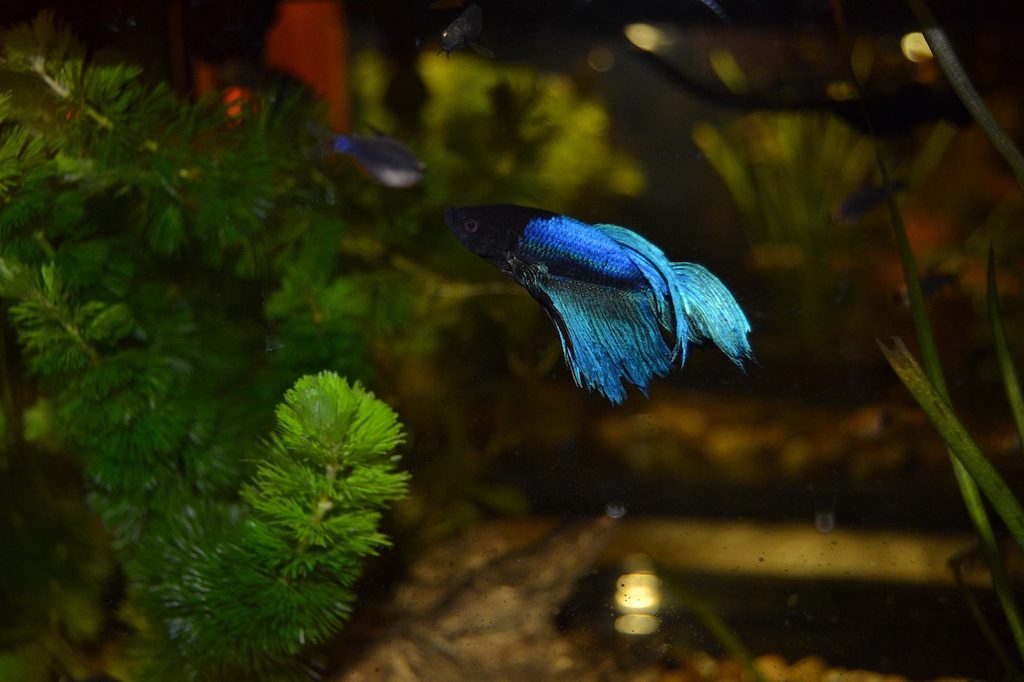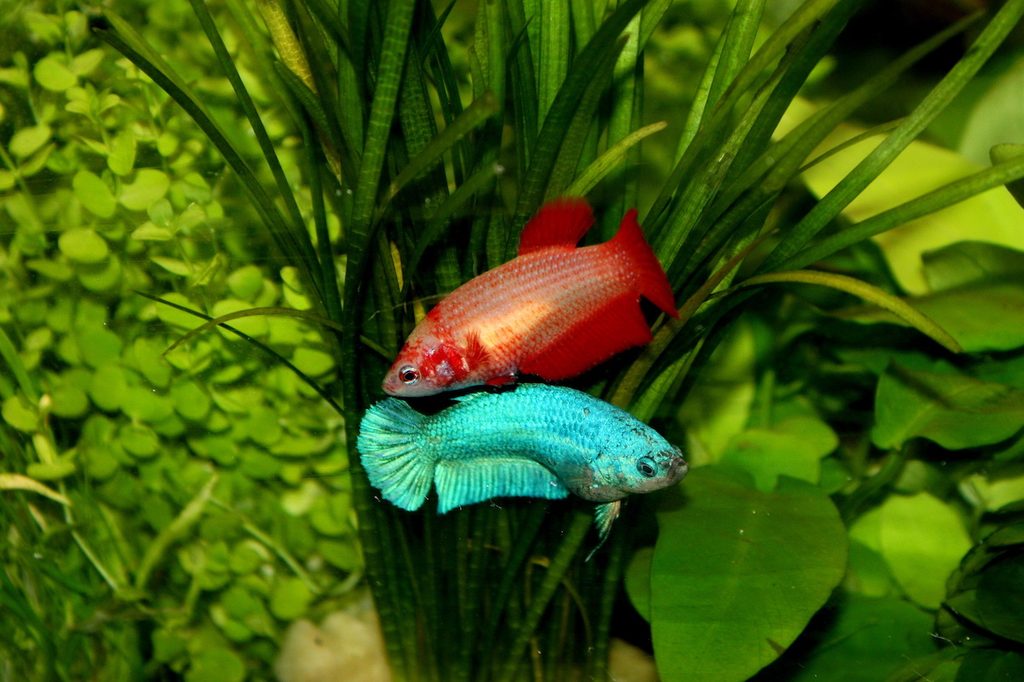While the betta craze may have died down a little, you still see many of these beautiful blue fish in homes and in stores. It’s true that they make great pets, even for a novice aquarist, since they don’t require an overly extensive tank setup and often prefer to be alone. But just because they work well for a newbie doesn’t mean you can dive in without any research. We’re here with what you need to know about betta fish care and fish tanks for bettas. Here are the do’s and don’ts for bettas.

What do I need to know about taking care of my betta fish?
Do research fish breeders
It all starts with the betta egg, and even the mom and dad. Just like with a puppy, you want to ensure your fishy has had a good life from hatching. There are tons of ethical breeders out there, but you can find some shady ones, too. In general, you want to avoid stores that have them crammed into tiny containers and cycled in and out every day. Do your research about local pet fish stores in your area or check out some of the more reputable ones online.
Make sure the bettas are being treated humanely and that your fish is healthy when you pick him up. You should be able to give your selected creature a bit of a once-over for any obvious signs of distress, such as dull scales, leaky eyes, or bloat. When you’ve found the right breeder and the right betta, it’s time to create his home with a proper betta fish tank setup.
Don’t get a small bowl
The ideal betta home is inspired by its native habitat. This fish actually hails from Thailand and has inhabited rice patties full of shallow water. So that means they just need a small tank, right? Wrong! While it’s true that these swimmers likely don’t want 30 gallons to themselves, don’t grab a tiny tank for your new friend.
Experts recommend at least 5 gallons for your animal and you might need a filter to boot. Make sure it has a gentle flow and you’ll still have to keep up with the usual cleaning. While your betta might survive in something smaller, you want to take the best care of your fish possible, so you should invest in a larger fish tank for bettas.
Do add a few companion animals
We’re going to tackle another myth while we’re at it: Bettas can live with other aquatic species. While you almost certainly should not put two bettas together (more on that in a minute), there’s no reason that you can’t add a different animal to this tank.
Lots of large and peaceful fish, like the Cory catfish, thrive in housing with bettas. You can also set your eye on non-fish aquarium dwellers, such as the aquatic frog. Since they won’t seem like a rival or prey to your little hunter, you shouldn’t have to worry about either one getting defensive. As always, when you introduce a new creature, do so carefully. And ensure you choose other species who want similar conditions to your fighting fish — who prefer warmer water.
Don’t put two bettas together
We mentioned this earlier, but it bears repeating. Do not put two bettas in a tank! You’ll find a lot of gimmicky tanks out there that allow two bettas to share the same water but split the area with a divider. It might be fun to watch your swimmers flare at each other a few times, but it’s causing them stress!
You should also never place a male and female in the same habitat or anywhere near each other for the same reason (we’ll cover breeding later). There’s an exception to this, however. Female bettas can live in small groups of about four or five fish and enjoy the company (they would need a bigger tank though.)

Do provide stimulation
While you don’t want your pet to constantly be in “fight mode,” you should give him something to do with a few fun and interesting tank decorations. Bettas are extra enjoyable because they will interact with you. If you come upon the tank, your fish will likely flare at you, which means puffing out his gills. Over time, he’ll grow to recognize you and stop acting territorial. That’s when you can introduce some games, such as follow the finger or you can teach him to swim through a hoop. Even with these recreational activities, it’s best to keep your hands outside the tank both for cleanliness and safety.
Don’t breed your fish
You might be thinking, how can bettas reproduce if the males and females can’t stay together? It’s a complicated process, and unless you’re a betta expert, we really can’t recommend it. Betta males may turn violent to the much-smaller females and you could end up with an injured fish. Even when done properly, they share a tank for a very brief time (in the wild, the female leaves shortly after laying her egg and the male stays by to protect them). It’s best to leave this to the pros.
Bettas make excellent, fun, and beautiful pets, no matter how much experience you have. As long as you follow these tips and keep up with regular care, you’ll have a happy companion for up to five years.



